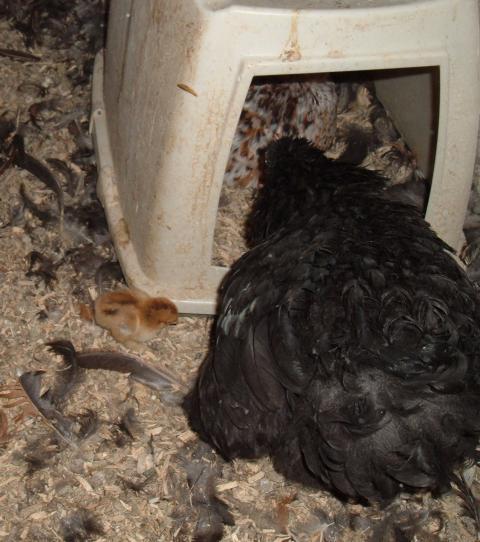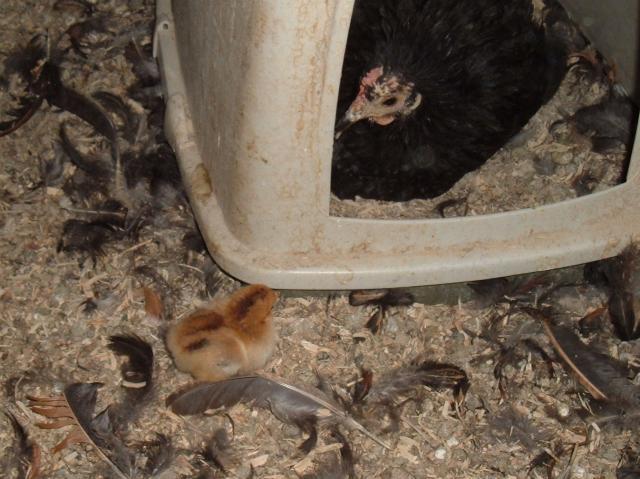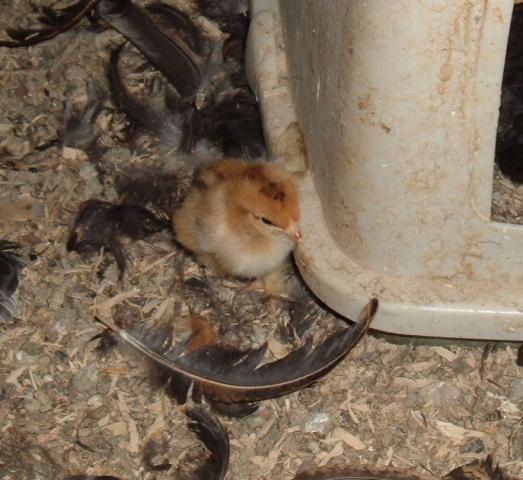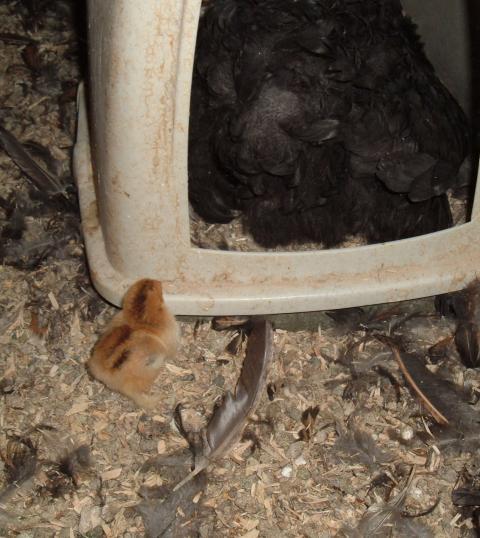Quote:
Oh my gosh!! This is scary! I did google some of the terms you mention, especially Mycoplasma gallisepticum, and I think I understand - my pullet is the product of a disease her dam had at one time? Also, half of her toenails turn up, like pixie toes, instead of curving down. Now I assume that is also a manafestation of the genetic defect? No, I had not planned to breed her, and now I really won't.
But my girl is otherwise healthy herself, right?
 She is the picture of health - none of the swollen eyes or respiratory distress that I read about.
She is the picture of health - none of the swollen eyes or respiratory distress that I read about.
- Is she safe to have, and handle?
- Safe to have around the other birds?
- Is it safe to eat her eggs? Those were the things I was not clear about as I read.
Wow! And to think this came from a casual question about what I thought was a cosmetic problem!!!! Thank you for your information.
Okay, so I've tried to find information Mycoplasma gallisepticum. From everything I am finding; this seems to be a bacterial disease, not a gentetic disease. I have raised several chicks from this hen, all have been absolutely beautiful and healthy. All my birds are kept in a clean, healthy enviroment. I work very hard to raise excellent quality birds, have spent a ton of money to make my breeding program as top notch as I can.
I am questioning as to how it is only the dam that can pass on this disease? Also, nothing I have found on the internet mentions the odd feathering.
Does anyone else have any ideas on what the problem might be with this hen? I have never seen anything like it and now I feel terrible that I have bred this bird. The hen has always been in perfect health, is perfectly feathered, has had several beautiful babies that have always been normal. All my eggs are incubated, not set under a broody hen.
I would never sell anyone a chick that I felt was not healthy or abnormal in any way~ Also; I have had the hen since she was just a few months old, she has never been sick in ANY way. She is just a year and a half now.
Twyla, please don't feel bad about this, it's not your fault and nothing that you've done deliberately or neglectfully. I find the discussion fascinating mainly because I've had problems with birds that I wondered about in this way, i.e., genetic problems resulting from disease or vise versa. I was the person that ended up putting down the hen that Mandy was talking about. I did everything I knew to do, talked to all of the people I could think to talk to, and this poor hen did nothing but get progressively and increasingly ill. Strangely enough, sick as she was, every time she became sick I expected someone else to fall ill also. I was afraid that even the limited exposure to the flock before I could isolate her might cause another bird to contract what she had, but she never passed her "disease" on to anyone. I know the breeder that Mandy got the bird from and he is a very good breeder, very well respected and I don't hold him "responsible" for selling a sick or poorly bird. She was perfectly fine when Mandy received her and for quite a long time after that, really she didn't begin to get chronic with her illness until she came to live with me, so I did sort of blame myself for a short time. However, my other birds were and are far to healthy for me to hold on to that for any period of time.
I feel uncomfortable leaving things hanging with you like this, because if I were in your position I would be feeling the same way and experiencing all kinds of self doubt, etc. So again I want to say don't make yourself sick over this, I'm not concerned about selling my birds to you, and I wouldn't hesitate to look to you for a bird if I needed one.
It would be interesting, if you can find someone to do the testing that Beth's friend is suggesting, to get that done, but if you can't find a place to do it, I wonder if you could draw any conclusions about the problem, by doing some test breedings? Sure would like to hear from Craig and Tom on this, maybe it should have been moved over to the genetics thread.
Oh my gosh!! This is scary! I did google some of the terms you mention, especially Mycoplasma gallisepticum, and I think I understand - my pullet is the product of a disease her dam had at one time? Also, half of her toenails turn up, like pixie toes, instead of curving down. Now I assume that is also a manafestation of the genetic defect? No, I had not planned to breed her, and now I really won't.
But my girl is otherwise healthy herself, right?

- Is she safe to have, and handle?
- Safe to have around the other birds?
- Is it safe to eat her eggs? Those were the things I was not clear about as I read.
Wow! And to think this came from a casual question about what I thought was a cosmetic problem!!!! Thank you for your information.
Okay, so I've tried to find information Mycoplasma gallisepticum. From everything I am finding; this seems to be a bacterial disease, not a gentetic disease. I have raised several chicks from this hen, all have been absolutely beautiful and healthy. All my birds are kept in a clean, healthy enviroment. I work very hard to raise excellent quality birds, have spent a ton of money to make my breeding program as top notch as I can.
I am questioning as to how it is only the dam that can pass on this disease? Also, nothing I have found on the internet mentions the odd feathering.
Does anyone else have any ideas on what the problem might be with this hen? I have never seen anything like it and now I feel terrible that I have bred this bird. The hen has always been in perfect health, is perfectly feathered, has had several beautiful babies that have always been normal. All my eggs are incubated, not set under a broody hen.
I would never sell anyone a chick that I felt was not healthy or abnormal in any way~ Also; I have had the hen since she was just a few months old, she has never been sick in ANY way. She is just a year and a half now.
Twyla, please don't feel bad about this, it's not your fault and nothing that you've done deliberately or neglectfully. I find the discussion fascinating mainly because I've had problems with birds that I wondered about in this way, i.e., genetic problems resulting from disease or vise versa. I was the person that ended up putting down the hen that Mandy was talking about. I did everything I knew to do, talked to all of the people I could think to talk to, and this poor hen did nothing but get progressively and increasingly ill. Strangely enough, sick as she was, every time she became sick I expected someone else to fall ill also. I was afraid that even the limited exposure to the flock before I could isolate her might cause another bird to contract what she had, but she never passed her "disease" on to anyone. I know the breeder that Mandy got the bird from and he is a very good breeder, very well respected and I don't hold him "responsible" for selling a sick or poorly bird. She was perfectly fine when Mandy received her and for quite a long time after that, really she didn't begin to get chronic with her illness until she came to live with me, so I did sort of blame myself for a short time. However, my other birds were and are far to healthy for me to hold on to that for any period of time.
I feel uncomfortable leaving things hanging with you like this, because if I were in your position I would be feeling the same way and experiencing all kinds of self doubt, etc. So again I want to say don't make yourself sick over this, I'm not concerned about selling my birds to you, and I wouldn't hesitate to look to you for a bird if I needed one.
It would be interesting, if you can find someone to do the testing that Beth's friend is suggesting, to get that done, but if you can't find a place to do it, I wonder if you could draw any conclusions about the problem, by doing some test breedings? Sure would like to hear from Craig and Tom on this, maybe it should have been moved over to the genetics thread.










